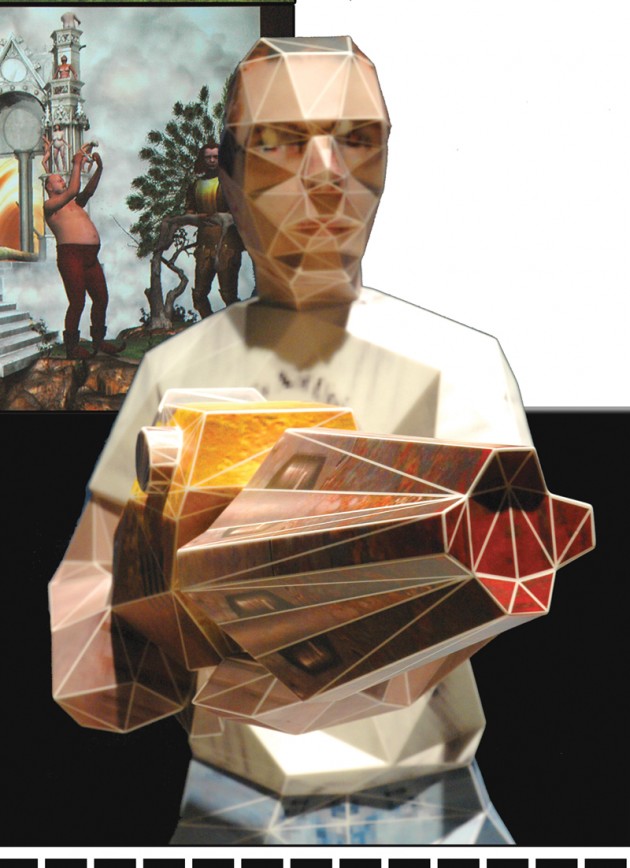Turn on, power up and drop into CAM

Peer violence, suicide and psychedelic drug use might be themes from either an after-school public-service special or two exhibits on display at USF’s Contemporary Art Museum (CAM).
Audience & Avatar and Brody Condon: Modifications explore ways artists are utilizing the medium of video games as a palette for new art. The exhibits, which opened after the off-beat, music-themed MashUp, are a continuation of what New Media Curator Don Fuller said is CAM’s alternative look at contemporary art.
“We like to do things differently at CAM,” he said. “We’ve selected provocative works from artists with a background in video games because we want to expand students’ view of contemporary art. Video games is not a subculture anymore. It’s bigger than Hollywood, and it’s something I felt was really relevant to a lot of students.”
The provocative works Fuller mentioned include naked avatars at a costume party, a blood-spattered virtual crime scene brought to life and a piece that shows 50 ways to commit suicide in first-person and third-person shooter games. These works, though violent and taboo, represent some of the ways people escape from real world problems, Fuller said.
“Some of the displays are a way of taking the horrors of real life and making them something that can be controlled,” he said. “When talking about his piece ‘Screenshots,’ John Haddocks was telling me that some of the images he chose to pixelate (including the Columbine shooting, the death of Princess Diana and the standoff in Tiananmen Square) were selected because he wanted to show them in a way that would be easier for his children to bear, and putting them in a video game world could make that happen.”
One of the key goals of both exhibits is to understand the synthetic fantasy worlds in the games and in the players’ heads. To explain how vivid these worlds can be for the player, “Without Sun” by Brody Condon strings together a series of videos of people using LSD. Condon viewed the way these people projected themselves into a world not like their own as similar to how players totally immerse themselves into gaming experiences.
The feeling of being fully absorbed into a video game, as it is not induced by hallucinogens, might be because of humans’ fascination with new technology, said Franco Mattes, one of the exhibits’ featured artists.
“Video games is the only truly original digital medium,” he said. “Everything else is a substitute for something in the real world: E-mail is for mail, a news Web site is for a newspaper and so on. But video games create something that cannot be tapped into in any other way, and it is because of that that people become so amazed by them.”
Video game art, as proved by the variety of works that are spawned from games, is not easily defined. While many consider the world-famous I AM 8-BIT gallery, which features traditional paintings and sketches of classic video game icons, the truest form of video game art, adjunct University Experience professor and sponsor of Overkill LAN — a series of gaming events — Rahul Agarwal said he has a more bare-bones outlook.
“Game art for me comes from the creators of the games themselves,” he said. “I’m in awe of video game physics and graphics today, and it is ultimately up to the game developer to create beautiful worlds that foster people’s imaginations. I think displays like the one at CAM could, however, help introduce more people to gaming. It would be great to get games mainstream as long as it doesn’t ruin the quality of games being produced.”
Audience & Avatar and Brody Condon: Modifications will be on display at CAM through Dec. 13. To find out more about the exhibit, visit ira.usf.edu.






